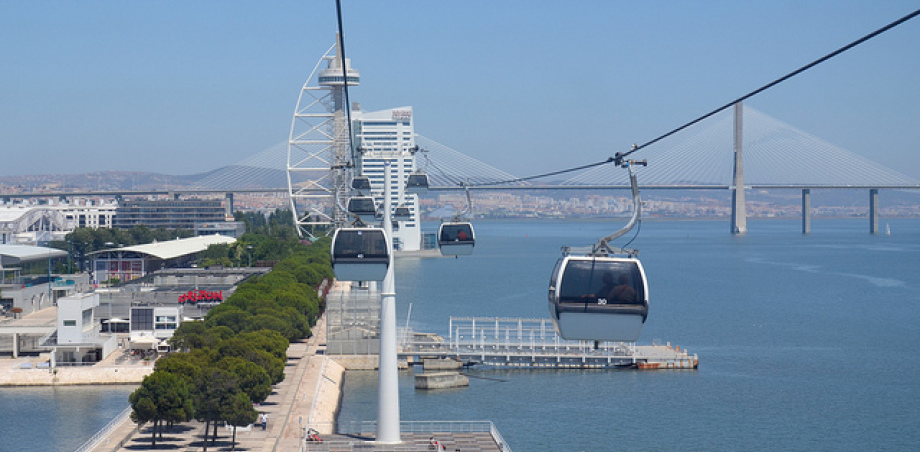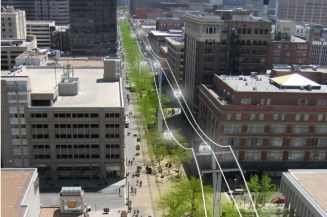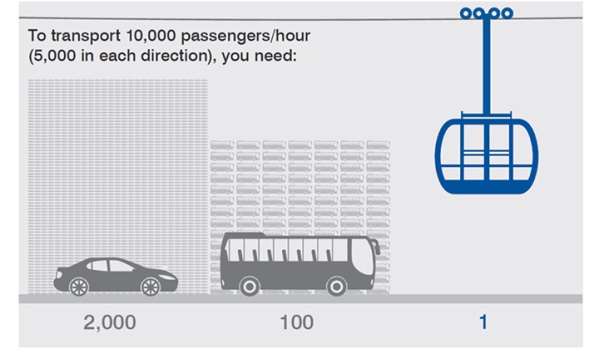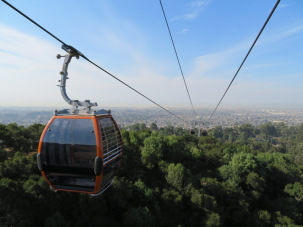
Consultants for Aerial Gondola, Cable Car, Aerial Tramway, and Funicular Ropeway Projects
Consulting Services for Monocable (1S), Bicable (2S), and Tricable (3S) Detachable Grip Gondolas, Reversible Trams and Funicular Cableways
ECO-Transit (ECO) provides specialist consulting for Cable Car, Aerial Tramway, Aerial Gondola Project, and Funicular project planning and feasibility studies for both "urban transit" cable car and "recreation attraction" gondola projects. Our study and project consultant services encompass the full range of planning, feasibility study, specifications, cost estimates, and client advisement for all modes of cable propelled transportation (CPT) systems. Our detachable grip gondola ropeway project services are independent from the lift and cable car manufacturers, suppliers, and contractors to assure impartiality and objectivity in our studies and planning. ECO also provides full-service consulting services for the rapidly expanding Aerial Cable Transit (ACT) industry in urban environments as rapid transit gondolas, and expertise with cable cars as resort transportation, and tourism attractions. ECO's consulting services for urban aerial transit systems, tourism attractions, and industrial transfer systems are provided to municipalities, project stakeholders, private developers, and transportation Architecture and Engineering (A&E) firms. ECO-Transit sets itself apart in the aerial cable transit and recreation industries by emphasizing the human element of "Sense of Place", and the environmental element of promoting "Green Transit" mobility solutions that are Eco-Mobile and Eco-Sustainable.
Eco-Transit performs its ropeway advisory services as a third party independent consultancy when we provide our consulting services for aerial ropeway studies and development projects. Members of our team were previously in the ropeway manufacturing industry, so we work cooperatively with and are very familiar with the design technologies of the current lift industry manufacturers’ Doppelmayr, Garaventa, Leitner, Poma, MND, Bartholet and others. We also collaborate on numerous aerial cableway projects with some of the major worldwide Architecture & Engineering firms such as HDR, Aecom, Jacobs, WSP, Parsons Group, Parametrix, Nelson-Nygaard, Parsons-Brinkerhoff, Golder, Lee-Elliott, Skidmore-Owings-Merrill (SOM) Intrawest, SOSH, Unstudios, Kimley-Horn, and others. For both domestic and international assignments, we collaborate with consultants accredited under the passenger ropeway standards of the European CEN Standards, American ANSI B77 Standard and Canadian CSA Z-98 Standard. We also assist our clients with evaluations of manufacturer-specific technologies, such as: D Line, Tri-Line, Rope Taxi, Connx, Cableliner, and Swyft Cities; and cabins such as CWA, Sigma, Stella, Omega, Symphony, Evo, Diamond and Cavatech.
URBAN TRANSIT - Aerial Cable Transit (ACT), or Cable Propelled Transit (CPT) is the use of aerial ropeways in the form of aerial gondolas, cable cars or tramways as a transit mode for public transportation in resort and more particularly, urban environments. Aerial Cableways are now being studied and implemented for specific urban routes by city planners and government entities on an equal footing alongside other rapid transit modes, such as bus rapid transit, light rail and automated people movers. ACT systems can operate at speeds up to 25 mph and can be designed as reversible aerial tramways with vehicles up to 250 passengers each and capacities up to 2,000 pph per direction, or as circulating aerial gondolas with vehicles up to 35 passengers each and capacities up to 6,000 pph per direction. Aerial gondolas are studied as mono-cable systems (1S) or (MGD), bi-cable systems (2S) or (BGD), or tri-cable systems (3S) or (TGD), depending upon their intended public transit or recreational routes, specifications, and applications.
Aerial Cable Transit, operating in an exclusive aerial right of way at 10,000 passengers per hour in both directions, compares favorably to the carrying capacities of light rail and BRT, and does not diminish traffic lanes on the ground. And, at 10,000 pph capacity, one ACT system takes the equivalent of 2,000 vehicles, or 100 buses off of the roadways.
ECO-Transit offers unique qualifications to clients for diverse types of tramway projects and the interfacing of cable driven transit systems with other modes of transit and associated mixed use development. The environmental benefits of this specialized form of “Green Transit” are showcased and implemented in our studies for urban projects. Special attention is given to Transit Oriented Development (TOD) and local neighborhood improvement opportunities within the ACT project areas, such as new residential and commercial development around the stations, and community centers and transit hubs to link with other transit modes. This area of ECO's expertise concentrates on community revenue generators and also social enrichment generators that can be integrated with the ACT project. An attention to the planning details associated with the layout of the Aerial People Mover routes and station locations can minimize any adverse impacts and maximize the socio-economic benefits to the surrounding neighborhood when the projects are developed and built out.
The implementation of ACT for urban public transit is a relatively new phenomenum, although New York City designed and constructed the Roosevelt Island Tramway for public transportation in 1975 and it operates reliably to this day. Many of the latest generation Urban Ropeways, or Telefericos, are located in Mexico and South America, operating in heavily traffic congested cities such as Mexico City, Medellin, Bogota, Caracas and La Paz, with the largest system in La Paz being 20 miles in length with 30 stations and transporting over 50 million passengers per year. Worldwide, it is estimated that over 500 million passengers are now transported each year on engineered and installed urban ACT systems. This is the same amount of passengers transported annually in the U.S. by all of our railroads and light rail systems combined. And for further reference, the 500 million annual passengers transported on ACT worldwide, is one half of the passengers transported annually by all airlines domestically in the U.S., and all airlines into and out of the U.S.
ATTRACTION / RECREATION - In addition to the urban transit application for aerial gondolas, cable cars and tramways is the recreational attraction application for resorts and other locations frequented by large numbers of visitors and tourists. Attraction aerial cableways are implemented as pure entertainment venues for their scenic views or as public transport at resorts and tourism destinations. As with ACT systems, Attraction cableways can operate at speeds up to 20 mph and can be designed as reversible aerial tramways with vehicles up to 250 passengers each and capacities up to 2,000 pph per direction, or as circulating aerial gondolas with vehicles up to 35 passengers each and capacities up to 6,000 pph per direction. Aerial gondolas can be implemented as mono-cable systems (1S), bi-cable systems (2S), or tri-cable systems (3S) depending upon the recreational routes and needs.
Aerial cableways providing rapid transit service in urban environments as ACT can also benefit from the attraction value of gondolas and cable cars if the urban area has scenic aerial views and benefits from high visitor and tourism numbers. Although the primary purpose of an aerial cableway may be as a transit system, if the above scenic value and tourism numbers are present, visitors will see the cableway system as a regional attraction and ride it for recreation rather than as public transit for locals and commuters. One time tourism users are also willing to pay higher attraction fares than transit user fares. As added benefit, this additional attraction ridership revenue can subsidize, or even fully pay for the ACT system's annual Operation and Maintenance (O&M) costs.
"Aerial Gondolas / Cable Cars / Aerial Tramways / Funiculars / Telefericos"




